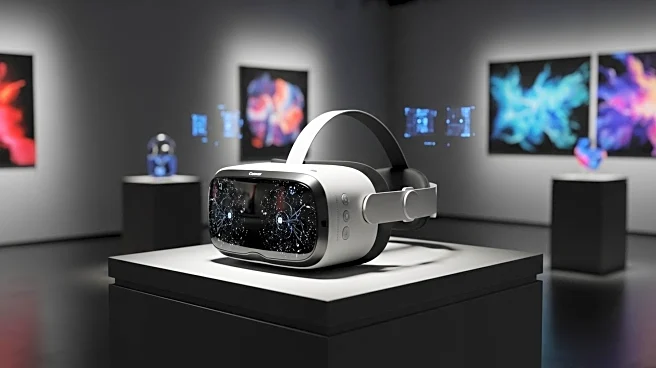What's Happening?
The National Portrait Gallery has partnered with Frameless Creative to launch 'Stories—Brought to Life,' a virtual reality experience that combines art and technology to create immersive storytelling. This initiative aims to attract new audiences by offering interactive experiences that showcase historical and contemporary figures such as Queen Elizabeth I, Audrey Hepburn, and Winston Churchill. The project utilizes a mosaic of screens to project dynamic animations, allowing visitors to engage with the stories in a visually captivating manner. The experience is currently being showcased at a temporary site in MediaCity, Manchester, with plans for further locations.
Why It's Important?
This venture represents a significant shift in how art institutions engage with the public, leveraging technology to enhance visitor experiences. By incorporating virtual reality, the National Portrait Gallery is addressing the growing demand for digital and interactive art forms, which have been popularized by global companies and venues. This approach not only broadens the gallery's reach but also sets a precedent for other museums to integrate technology into their exhibitions, potentially increasing visitor numbers and diversifying audience demographics.
What's Next?
The success of 'Stories—Brought to Life' could encourage more art institutions to explore partnerships with technology firms to create similar experiences. As the exhibition travels to different locations, it may inspire other galleries to adopt digital storytelling methods, potentially leading to a broader transformation in the art world. Stakeholders, including museum directors and technology companies, may look to collaborate further, exploring new ways to blend art and technology.
Beyond the Headlines
The integration of virtual reality in art exhibitions raises questions about the future of traditional art viewing experiences. As digital storytelling becomes more prevalent, museums may need to balance technological innovation with preserving the authenticity of physical art pieces. This development could also influence educational approaches, offering new ways to engage students with art history and cultural narratives.












